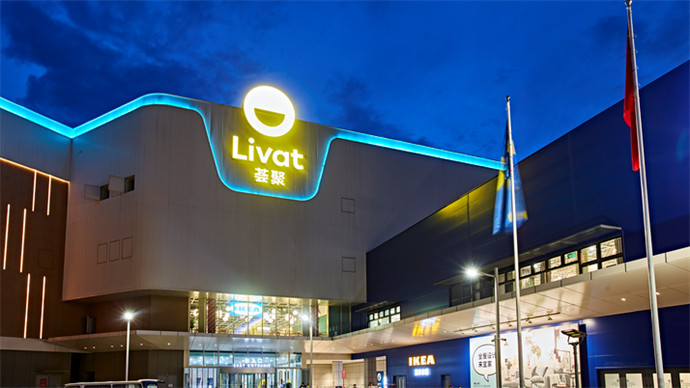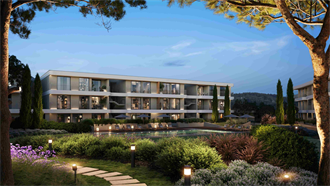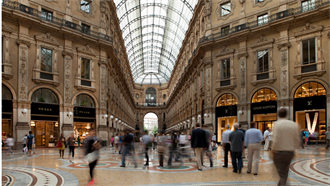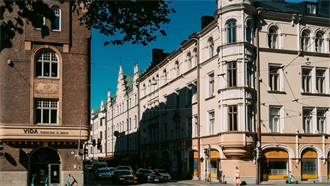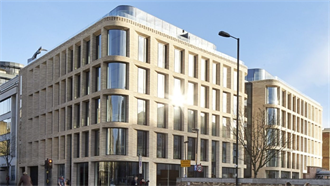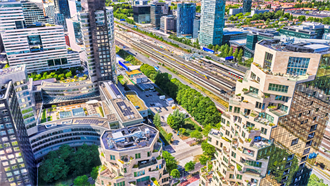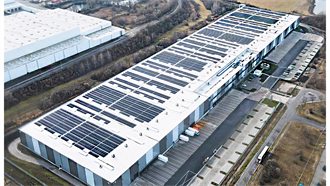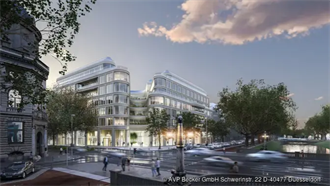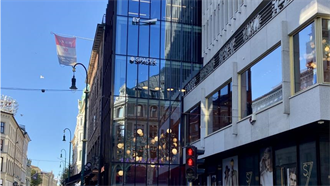Mixed-use assets are not a new phenomenon in the universe of city planning. Integrated concepts which blend commerce and housing, for example, are as old as towns themselves.
Yet something happened to the mixed-use concept in the last few years, particularly in relationship to retail’s tumultuous path. Complex, multi-functional schemes became seen as a way to generate footfall once more to physical stores, increasingly challenged by e-commerce. The other key trend was the changing way we live and run errands. With many retail duties fulfilled online, consumers now seek more from their outings: from dining, grocery shopping and browsing stores, to visiting a gym, a bank, or clinic – often all in one run.
While this trend pre-dated the pandemic, the impact of the global health crisis turned the screw still further. When we were all ‘locked-down’, the importance – and subsequent success – of local retail schemes revived interest in the truly convenient. Hence, concepts such as the “15-minute city” became a more important goal than ever. This model now fits with a converging set of global targets for the future of our cities, which have sustainability and society at their heart.
Real estate's quick-slow dance
For the real estate industry, agility in identifying and executing trends is crucial, precisely because planning consents can take so long. That means anticipating the direction of travel far before the new normal mushrooms in our cities.
For Ingka Centres, which forms part of the Ingka Group, including global furniture retailer Ikea, mixed-use has been on the radar for several years. ‘In 2016, we launched a new strategy with an objective to reinvent our shopping centres as meeting places. This was driven by changing customer demands and needs, in the light of online, digitalisation and urbanisation trends,’ says Cindy Andersen, managing director of Ingka Centres.
Andersen, who officially took the helm of the company in February 2021, actually came on board with Ingka around a year ago, transferring from a position of global business area manager for Inter Ikea Group. ‘I had an intro period for getting to know the company, before I took over the top role,’ she explains.
The pandemic was quite a moment to plug into retail real estate, as Andersen acknowledges.
‘It has been an extraordinary 18 months, but I’m so proud of how Ingka Centres and its partners across the portfolio managed to collaborate. There have been differences in terms of what centres could stay open, had to close, or were partially open. It has been a real test to lead into the unknown, stay flexible, stay adaptable, and work in a time when very few knew what to expect.
‘Looking back, we have learned so much and I’m very happy we had our long-term vision in place. We saw many trends were accelerated by the pandemic. In many ways, our meeting places strategy is more relevant than ever.’
The mixed-use mandate
Andersen’s role at Ingka Centres is her first in the real estate industry. Nevertheless, she has attained the position at a seismic moment for both the company and the industry as a whole.
Ingka Centres will seek to focus on only creating mixed-use projects in the future, rather than pure retail shopping centres, although they will be anchored as ever by Ikea stores.
‘The beauty of the meeting place idea is that it is a natural evolution,’ Andersen enthuses. ‘The traditional shopping centre was retail focused, yet also a meeting place people could come to once a week. We want to create meeting place destinations which are still very much retail-led, but offer more diversity in terms of other components, so you want to visit many more times a week.
'You can spend a day out there with family or friends, have dinner, maybe access services, with the emphasis on super-strong retail services in the future. They are both entertainment and community hubs. Retail is a very important part, but they also exist beyond retail.’
Adds Andersen: ‘Ingka Centres have this diversity: we don’t believe in one size fits all, we would never go into an area and build out from the values we want to impose. Our latest scheme to open in China this summer, Livat Changsha is our first real mixed-use development.
'The offer is built around socialising, leisure, entertainment and food, to create a one-stop destination. It also includes work-live units designed in collaboration with Ikea; we’re really testing how to put work, live and play into one place.
‘If you then take a look at our projects in San Francisco in the US and Hammersmith in London, they are already in an urban environment and lend themselves to the creation of natural meeting places. They will also be mixed-use, combining retail and an IKEA store with coworking and a unique food offering, as well as other components. They won’t look the same, although there will be commonalities.
'The real red thread through our schemes is sustainability. We’re not only focusing on operations, how we use energy, but also collaborating with our partners to promote and support sustainable lifestyles.’
Andersen affirms that they are also cleaning up the standing portfolio in this light. ‘We are focusing on operations, on keeping our commitment to climate targets. We are tackling that a lot in our existing meeting places and also trying to collaborate with partners in new ways, to influence what we offer, such as circular hubs, repair cafes and the concept of “love your stuff for longer”. Everyone has a role to play when it comes to sustainability.’
Digital goals
Despite the accent on community and a sense of place, however, Andersen acknowledges that e-commerce is a major and inescapable part of retail’s future. But she is surprisingly upbeat.
‘This is one of our big dreams – that we don’t see the physical and digital as a divide but as an “and”. We already live in an omnichannel reality. There is a future for physical spaces and experiences, places where you can touch and feel, be around products, and share moments together… in that sense, the physical space is super important.
At the same time, it’s about finding ways to join online and offline. For example, Changsha is an amazing meeting place but we augmented its digital specs to encompass everything from loyalty programmes to WeChat. The future is a place where we optimise the role of the phygital.
‘Post-pandemic, what has been really important is seeing people return to our meeting places. That underlines the importance of not having a divide between physical and digital, as we now live with both and we need both.’
Andersen is enthusiastic about the role of F&B in cementing the physical centre’s future. ‘We love food, because food unites. It also has such an important role to play when it comes to sustainability, health and wellbeing. It really is super strategic and we have really big ambitions in this area (see box, Ikea: Furniture to farm). We’re interested in providing more plant-based offers into menus, creating more choice. The opening of our next food courts in Sweden will pioneer our new F&B style.’
Finally, while going to press, Ingka Investments’ latest deal – landing the former Top Shop flagship at Oxford Circus in London – came to light. This mammoth transaction, worth £378 mln (€446 mln), sees Ingka take ownership of one of the icons of UK retail real estate.
The property comprises a total of 22,200 m2 over seven floors, with retail space on six floors. Ingka has decided that part of the vacant retail space will be used by Ikea UK & Ireland, in line with its strategy to bring Ikea into city locations. It will host Ikea UK’s second smaller store format and will follow the opening of IKEA Hammersmith later this winter.
Peter Jelkeby, country retail manager and chief sustainability officer, Ikea UK & Ireland, said: ‘Big global movements in technology, demographics, urbanisation and environmental awareness have caused significant waves of change in the way we live and shop.
‘Bringing Ikea to the heart of Oxford Street – one of the most innovative, dynamic and exciting retail destinations in the world – is a direct response to these societal shifts and an exciting step forward in our journey to becoming a more accessible Ikea.’

